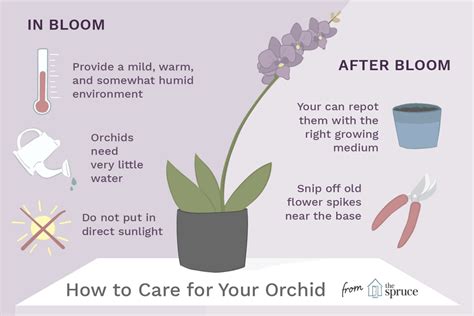How To Care For An Orchid Plant: A Beginner's Guide to Blooming Beauty
Orchids, with their exotic blooms and elegant forms, are often perceived as finicky plants. While they do require specific care, cultivating healthy and vibrant orchids is achievable with the right knowledge. This comprehensive guide will walk you through everything you need to know to nurture your orchid and enjoy its breathtaking beauty for years to come.
Understanding Your Orchid: The Key to Success
Before diving into care instructions, it’s crucial to understand the type of orchid you own. There are thousands of orchid species, but some popular varieties include Phalaenopsis (Moth orchids), Dendrobium, and Cattleya. Each variety has slightly different needs, so researching your specific type will greatly improve your success rate. Look for identifying tags or labels that came with your plant.
Identifying Your Orchid Type
Visual Clues: Pay attention to the flower shape, stem structure, and leaf texture. Pictures online can help you narrow down your orchid's type.
Researching Your Orchid: Once you have an idea of the type, search online for specific care instructions for that variety. Many orchid enthusiasts share detailed information on online forums and gardening blogs.
Light, Watering, and Humidity: The Holy Trinity of Orchid Care
These three factors are the most critical aspects of orchid care. Getting them right is essential for healthy growth and abundant blooms.
Light: The Goldilocks Principle
Orchids thrive in bright, indirect light. Avoid direct sunlight, which can scorch their delicate leaves. An east- or west-facing window is usually ideal, but you may need to adjust based on the intensity of the sunlight in your area. If the leaves appear yellowed, the plant is getting too much light; if they are dark green and leggy, it needs more light.
Watering: Less is More (Often)
Overwatering is a common mistake that leads to root rot, a fatal condition for orchids. Allow the potting medium to dry out almost completely between waterings. Check the moisture level by sticking your finger about an inch into the potting mix. If it feels dry, it's time to water. Water thoroughly, allowing excess water to drain completely from the pot. Avoid letting the orchid sit in standing water.
Humidity: Mimicking Their Natural Habitat
Most orchids prefer higher humidity than typically found in homes. You can increase humidity by grouping plants together, placing the orchid on a pebble tray filled with water, or using a humidifier. Regularly misting the leaves can also help, but avoid wetting the flowers.
Potting Mix and Repotting: Supporting Healthy Roots
Orchids don't like to be constantly wet, so their potting mix needs to be well-draining. A specialized orchid potting mix is recommended, usually a blend of bark chips, perlite, and charcoal.
Repotting: When and How
Repot your orchid every 1-2 years or when the potting mix breaks down or becomes compacted. Choose a pot that is only slightly larger than the previous one. Gently remove the orchid from its old pot, carefully loosen any tangled roots, and plant it in fresh potting mix.
Fertilizing Your Orchid: Nourishment for Blooms
Orchids are not heavy feeders. Fertilize your orchid once or twice a month during the growing season (spring and summer) with a balanced orchid fertilizer diluted to half strength. Reduce or stop fertilizing during the dormant period (fall and winter).
Troubleshooting Common Orchid Problems: Addressing Challenges
- Yellowing leaves: Could indicate overwatering, underwatering, or too much direct sunlight.
- Drooping leaves: Usually a sign of underwatering or root rot.
- No blooms: Check light levels, watering frequency, and fertilization. Orchids sometimes need a period of cooler temperatures to trigger blooming.
By following these tips and paying close attention to your orchid’s needs, you’ll be well on your way to enjoying its stunning blooms and the rewarding experience of cultivating this beautiful plant. Remember, patience and observation are key to successful orchid care.
